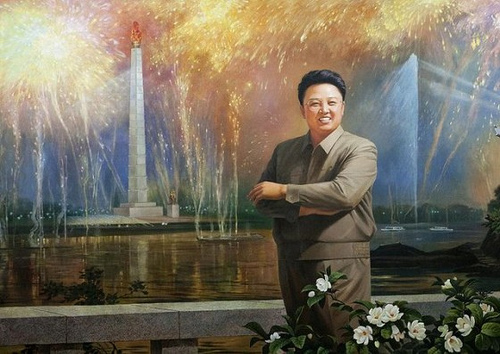Op Eds & Articles

Kim Jong-il, the former leader of North Korea has often been labeled by the media a living god of the North Korean people. His photograph was on the wall of every home, his statues are widely placed throughout Pyongyang’s streets, and the national library holds mostly his writings.
His supremacy is represented in the myth of his birth – the official version that is taught to North Koreans, young and old. Although historic records state that Kim Jong-il was born outside of Korea, while his father was in exile, the myth tells the story that he was born on the sacred Paektu Mountain, the place where the half-god ancestor of all Koreans- Tangun- was born. The myth goes on to tell us that before his birth a swallow carried the news that a remarkable person is about to be born, and at the moment of his birth a new star appeared and a double-rainbow colored the sky within a huge storm. Propaganda videos show the great Korean leader riding a horse while commanding storms to appear and stop at his will.
Upon his death last month, North Korea’s media showed multitudes of people crying and suffering after hearing the news, mourning not only Kim Jong-il’s life end but also the end of their personal dependence on their beloved leader. Similar scenes were broadcast in 1994 when Kim Il-sung, the Great leader of Korea and the father on Kim Jong-il passed away. Kim Il-sung is still venerated on various occasions, such as his birthday and from what has been documented we learn that at least some of the North Korean population believes that he is still overseeing their life from the world beyond.
In order to follow the reasons for this leader cult, the Korean culture needs to be examined more deeply. Two cultural strands are related to sanctification of leaders. The first is the Confucian tradition, which holds deep respect to elders and to leaders. The individual is supposed to always express his gratitude to his superiors and refrain from criticizing them. After death, most Korean people are worshipped as ancestors.
The second strand is the shamanistic tradition, which allegedly has been eradicated from the North of the peninsula but is alive and well below the 38 parallel in South Korea. Many shamans (in Korean: manshin) had fled from the North during the Korean War for fear of persecution and continue to practice and initiate new manshin in the Republic of Korea in the South. In their belief system, important people become strong and influential spirits upon death, and they can communicate with the world of the living through the mediation of the manshin. In North Korea, while the official tendency is to denounce religious activity, there is a continuity of Confucian and Shamanic ideas through the mechanisms of civil propaganda. Therefore, we have every reason to expect that Kim Jong-il will be venerated as a sacred spirit after death. The myth of his leadership and grandeur is being cultivated even after his death, for example, by the official statement that he passed away while travelling by train to various locations during his work to help his people lead a better life.
North Korea’s propaganda, which we consider a creation of a communist mechanism, builds in fact on traditions and beliefs by manipulating the feelings of their population for the purpose of creating strong leadership and eliminating civil unrest. In this way a modern dictatorship intertwines with long-standing folklore and custom to create this unique riddle of North Korea.
If history repeats itself once more, the young new leader, Kim Jong-un might follow in his father’s footsteps to become another living god. It has already been implied that the heir apparent’s facial features resemble Kim Il-sung, his grandfather’s, which might add to his popularity in North Korea.
Since the declaration of Kim Jong-un as the new leader of that isolated and aggressive nation, there has been no indication of a softening stannce toward nuclear disarmament or willingness to engage in international collaboration. If the myth will hold and North Korea will manage to maintain tight control over civil unrest, China, Japan, South Korea, and the rest of the world might be left again to the mercy of a totalitarian leader, who manufactures and distributes weapons of mass destruction regardless the hunger and poverty of his own populace.

 Back
Back